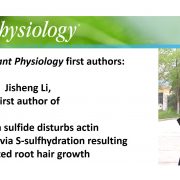
Recognizing Plant Physiology first authors: Jisheng Li
Plant Physiology, Plant Physiology: Author ProfilesJisheng Li, first author of Hydrogen sulfide disturbs actin polymerization via S-sulfhydration resulting in stunted root hair growth
Current Position: Associate professor, College of Life Sciences, Northwest A&F University, China
Education: Ph.D in Lanzhou University, China
Non-scientific…
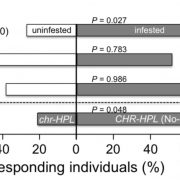
A reductase of green leaf volatiles that affects indirect plant defences (Plant Physiol.)
Plant Science Research WeeklyGreen leaf volatiles (GLVs) are a set of six-carbon volatile molecules that are produced in response to wounding and herbivore activity and contribute to plant defences including indirect defences. As yet, the pathways involved in production and removal of GLVs are largely not known. Tanaka et al. identified…
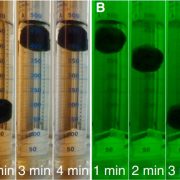
Photosynthesis and circadian rhythms regulate the buoyancy of marimo lake balls (Curr. Biol.)
Plant Science Research WeeklyMarimo are aggregations of the filamentous green macroalga Aegagropila linnaei. They grow in lake beds in Japan, Iceland and Ukraine and are can rise to the lake surface after becoming buoyant. In this paper, Cano-Ramirez et al. showed that this movement is the product of the formation of air bubbles…
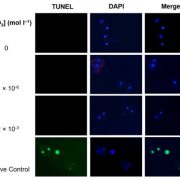
The mechanism of SO2-induced stomatal closure differs from O3 and CO2 responses and is mediated by non-apoptotic cell death in guard cells ($) (Plant Cell Environ)
Plant Science Research WeeklyStomata opening and closing are regulated by guard cells. Airborne pollutants such as ozone, sulfur dioxide, and nitrogen dioxide cause stomatal closure. In this study, Lia Ooi et al. tried to understand the molecular mechanism of SO2-induced stomatal closure. SO2 is found in three forms in aqueous solution…
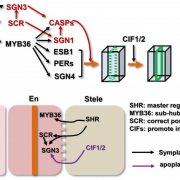
Construction of a functional Casparian strip in non-endodermal lineages is orchestrated by two parallel signaling systems ($) (Curr. Biol.)
Plant Science Research WeeklyThe Casparian strip in the endodermis acts a barrier to allow the selective absorption of water and nutrients. Because of its cell-specific presence, the Casparian strip is considered a marker for functional endodermis. The cellular identity of endodermis is controlled by two transcription factors, SHR…
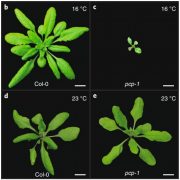
PORCUPINE regulates development in response to temperature through alternative splicing ($) Nature Plants
Plant Science Research WeeklyIn this study, the authors performed strand-specific RNA sequencing of wild-type seedlings at 16°C, 23°C, and 27°C. They have found one candidate gene, a small nuclear robinucleoprotein family protein which contains a Like-Sm (LSM) domain. They named it as PORCUPINE (PCP) due to its “spiky” phenotype.…
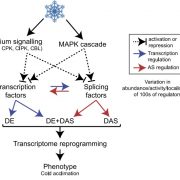
Rapid and dynamic alternative splicing impacts the Arabidopsis cold response transcriptome ($) (Plant Cell)
Plant Science Research WeeklyPlants experience abiotic stresses, such as alteration of temperature, and their responses have been studied through transcriptomics and proteomics approaches. X et al have studied how low temperature stress affects the transcriptome through alternative splicing. The author showed that a few hours after…
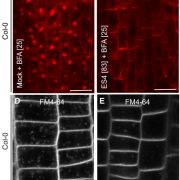
The inhibitor Endosidin 4 targets SEC7 domain-type ARF GTPase exchange factors and interferes with subcellular trafficking ($) (Plant Cell)
Plant Science Research WeeklySubcellular trafficking helps determine the development of the plant through for instance the regulation of polar localization of auxin transporter PIN-FORMED (PIN) proteins. PIN trafficking or recycling is maintained by GNOM, a BFA-sensitive ARF GEF (ADP-ribosylation factor guanine nucleotide exchange…
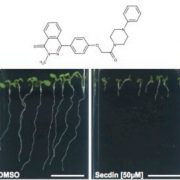
Nonselective chemical inhibition of Sec7 domain-containing ARF-GEFs in Arabidopsis ($) (Plant Cell)
Plant Science Research WeeklyARF GEFs (ADP-ribosylation factor guanine nucleotide exchange factors) play a major role in the intracellular trafficking and eventually regulate developmental cues. As plants contain multiple ARF GEF with very similar sequences, chemical genetics approaches are more appropriate to uncover their function…

